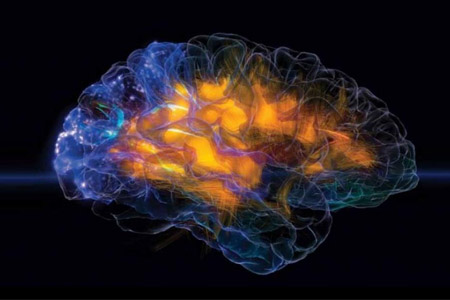- Autori:
-
Pontillo, Giuseppe; Prados, Ferran; Colman, Jordan; Kanber, Baris; Abdel-Mannan, Omar; Al-Araji, Sarmad; Bellenberg, Barbara; Bianchi, Alessia; Bisecco, Alvino; Brownlee, Wallace J; Brunetti, Arturo; Cagol, Alessandro; Calabrese, Massimiliano; Castellaro, Marco; Christensen, Ronja; Cocozza, Sirio; Colato, Elisa; Collorone, Sara; Cortese, Rosa; De Stefano, Nicola; Enzinger, Christian; Filippi, Massimo; Foster, Michael A; Gallo, Antonio; Gasperini, Claudio; Gonzalez-Escamilla, Gabriel; Granziera, Cristina; Groppa, Sergiu; Hacohen, Yael; Harbo, Hanne F F; He, Anna; Hogestol, Einar A; Kuhle, Jens; Llufriu, Sara; Lukas, Carsten; Martinez-Heras, Eloy; Messina, Silvia; Moccia, Marcello; Mohamud, Suraya; Nistri, Riccardo; Nygaard, Gro O; Palace, Jacqueline; Petracca, Maria; Pinter, Daniela; Rocca, Maria A; Rovira, Alex; Ruggieri, Serena; Sastre-Garriga, Jaume; Strijbis, Eva M; Toosy, Ahmed T; Uher, Tomas; Valsasina, Paola; Vaneckova, Manuela; Vrenken, Hugo; Wingrove, Jed; Yam, Charmaine; Schoonheim, Menno M; Ciccarelli, Olga; Cole, James H; Barkhof, Frederik
- Titolo:
-
Disentangling Neurodegeneration From Aging in Multiple Sclerosis Using Deep Learning: The Brain-Predicted Disease Duration Gap
- Anno:
-
2024
- Tipologia prodotto:
-
Articolo in Rivista
- Tipologia ANVUR:
- Articolo su rivista
- Lingua:
-
Inglese
- Formato:
-
Elettronico
- Referee:
-
Sì
- Nome rivista:
- NEUROLOGY
- ISSN Rivista:
- 0028-3878
- N° Volume:
-
103
- Numero o Fascicolo:
-
10
- Intervallo pagine:
-
1-17
- Parole chiave:
-
Neurodegeneration, Aging, Deep Learning, Multiple Sclerosis, Brain-age paradigm
- Breve descrizione dei contenuti:
- Background and objectives: Disentangling brain aging from disease-related neurodegeneration in patients with multiple sclerosis (PwMS) is increasingly topical. The brain-age paradigm offers a window into this problem but may miss disease-specific effects. In this study, we investigated whether a disease-specific model might complement the brain-age gap (BAG) by capturing aspects unique to MS. Methods: In this retrospective study, we collected 3D T1-weighted brain MRI scans of PwMS to build (1) a cross-sectional multicentric cohort for age and disease duration (DD) modeling and (2) a longitudinal single-center cohort of patients with early MS as a clinical use case. We trained and evaluated a 3D DenseNet architecture to predict DD from minimally preprocessed images while age predictions were obtained with the DeepBrainNet model. The brain-predicted DD gap (the difference between predicted and actual duration) was proposed as a DD-adjusted global measure of MS-specific brain damage. Model predictions were scrutinized to assess the influence of lesions and brain volumes while the DD gap was biologically and clinically validated within a linear model framework assessing its relationship with BAG and physical disability measured with the Expanded Disability Status Scale (EDSS). Results: We gathered MRI scans of 4,392 PwMS (69.7% female, age: 42.8 ± 10.6 years, DD: 11.4 ± 9.3 years) from 15 centers while the early MS cohort included 749 sessions from 252 patients (64.7% female, age: 34.5 ± 8.3 years, DD: 0.7 ± 1.2 years). Our model predicted DD better than chance (mean absolute error = 5.63 years, R2 = 0.34) and was nearly orthogonal to the brain-age model (correlation between DD and BAGs: r = 0.06 [0.00-0.13], p = 0.07). Predictions were influenced by distributed variations in brain volume and, unlike brain-predicted age, were sensitive to MS lesions (difference between unfilled and filled scans: 0.55 years [0.51-0.59], p < 0.001). DD gap significantly explained EDSS changes (B = 0.060 [0.038-0.082], p < 0.001), adding to BAG (ΔR2 = 0.012, p < 0.001). Longitudinally, increasing DD gap was associated with greater annualized EDSS change (r = 0.50 [0.39-0.60], p < 0.001), with an incremental contribution in explaining disability worsening compared with changes in BAG alone (ΔR2 = 0.064, p < 0.001). Discussion: The brain-predicted DD gap is sensitive to MS-related lesions and brain atrophy, adds to the brain-age paradigm in explaining physical disability both cross-sectionally and longitudinally, and may be used as an MS-specific biomarker of disease severity and progression.
- Pagina Web:
-
https://doi.org/10.1212/WNL.0000000000209976
- Id prodotto:
-
142381
- Handle IRIS:
-
11562/1144688
- ultima modifica:
-
8 marzo 2025
- Citazione bibliografica:
-
Pontillo, Giuseppe; Prados, Ferran; Colman, Jordan; Kanber, Baris; Abdel-Mannan, Omar; Al-Araji, Sarmad; Bellenberg, Barbara; Bianchi, Alessia; Bisecco, Alvino; Brownlee, Wallace J; Brunetti, Arturo; Cagol, Alessandro; Calabrese, Massimiliano; Castellaro, Marco; Christensen, Ronja; Cocozza, Sirio; Colato, Elisa; Collorone, Sara; Cortese, Rosa; De Stefano, Nicola; Enzinger, Christian; Filippi, Massimo; Foster, Michael A; Gallo, Antonio; Gasperini, Claudio; Gonzalez-Escamilla, Gabriel; Granziera, Cristina; Groppa, Sergiu; Hacohen, Yael; Harbo, Hanne F F; He, Anna; Hogestol, Einar A; Kuhle, Jens; Llufriu, Sara; Lukas, Carsten; Martinez-Heras, Eloy; Messina, Silvia; Moccia, Marcello; Mohamud, Suraya; Nistri, Riccardo; Nygaard, Gro O; Palace, Jacqueline; Petracca, Maria; Pinter, Daniela; Rocca, Maria A; Rovira, Alex; Ruggieri, Serena; Sastre-Garriga, Jaume; Strijbis, Eva M; Toosy, Ahmed T; Uher, Tomas; Valsasina, Paola; Vaneckova, Manuela; Vrenken, Hugo; Wingrove, Jed; Yam, Charmaine; Schoonheim, Menno M; Ciccarelli, Olga; Cole, James H; Barkhof, Frederik,
Disentangling Neurodegeneration From Aging in Multiple Sclerosis Using Deep Learning: The Brain-Predicted Disease Duration Gap
«NEUROLOGY»
, vol.
103
, n.
10
,
2024
,
pp. 1-17
Consulta la scheda completa presente nel
repository istituzionale della Ricerca di Ateneo 








